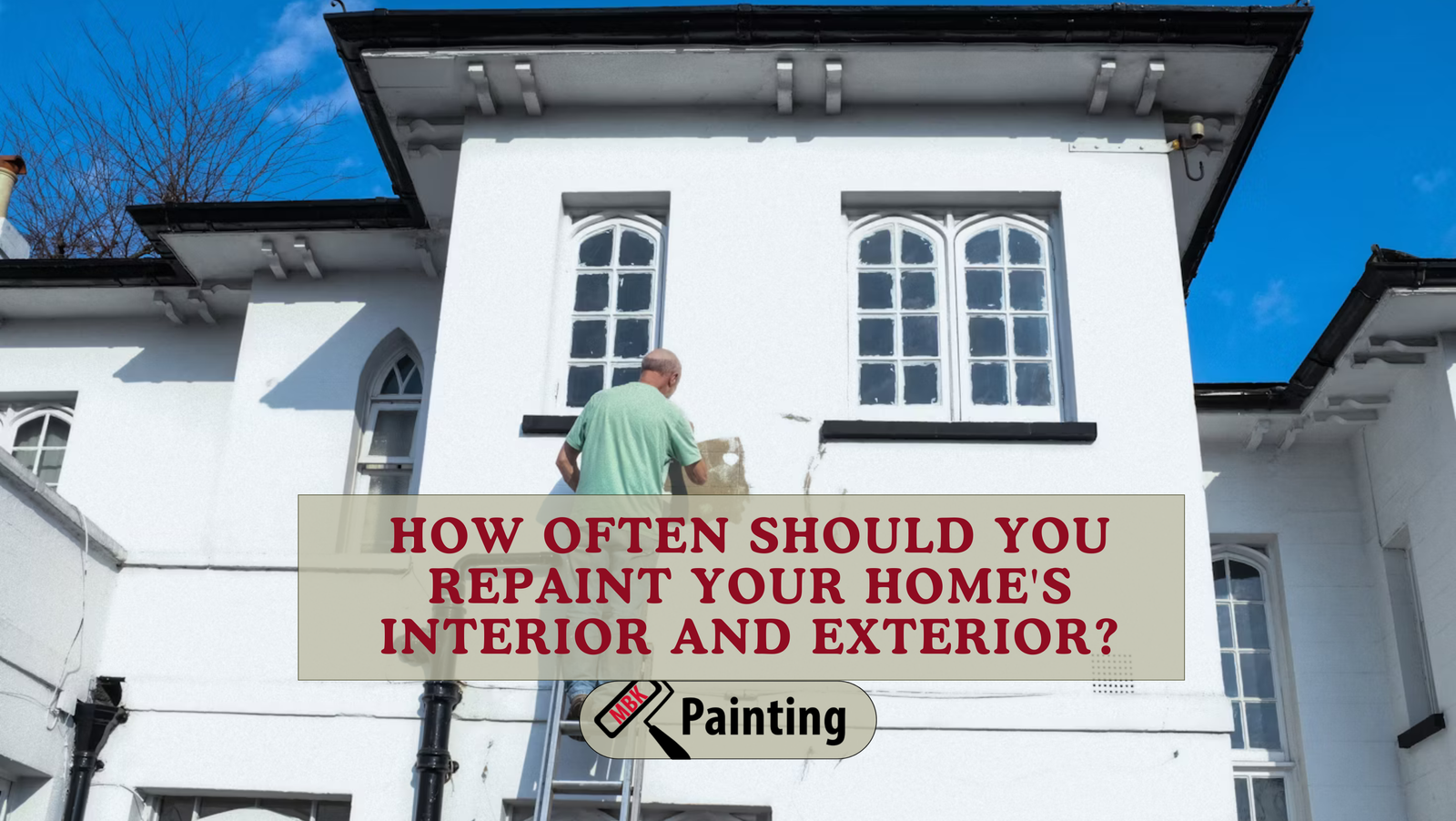Repainting your home is one of the easiest and most effective ways to refresh its look, maintain its value, and protect surfaces from wear and tear. However, determining how often you should repaint both the interior and exterior of your home can be tricky. Several factors influence the timeline, including the type of paint used, the weather conditions, and the overall wear the surfaces experience. In this article, we’ll explore the best practices for repainting your home’s interior and exterior, helping you make an informed decision about when to refresh your paint.
How Often Should You Repaint Your Home’s Interior?
The interior of your home generally requires less frequent painting than the exterior due to more controlled environmental factors. However, several elements can influence how often you’ll need to repaint.
1. Room Usage and High-Traffic Areas
High-traffic areas, such as hallways, kitchens, bathrooms, and children’s rooms, will require more frequent repainting because they are subject to more wear and tear. These areas are more prone to stains, scuffs, and marks. Kitchens and bathrooms, in particular, are susceptible to moisture damage and mold growth, which can degrade the paint over time.
- Recommended Frequency: For high-traffic areas, plan to repaint every 3-5 years.
- Low-traffic areas like bedrooms or living rooms may need repainting every 5-7 years, depending on how well the paint holds up.
2. Type of Paint and Finish
The type of paint and the finish you choose also play a role in determining how often you should repaint. High-gloss or semi-gloss paints are generally more durable and easier to clean, which makes them suitable for areas that see more activity. Matte or flat finishes, on the other hand, tend to absorb stains more easily, so they may need to be refreshed more frequently.
- Recommended Frequency: If you used high-quality, durable paints, you might stretch the repainting to 7-10 years. For flat finishes, it might be necessary to repaint every 3-5 years.
3. Color and Aesthetic Changes
If you’re simply changing the color scheme or updating the look of a room, you might repaint more often. Over time, the interior paint color may start to look dated or may not reflect your evolving style. In these cases, repainting every 3-5 years might be a good idea, especially if you’re aiming for a significant aesthetic change.
4. Condition of the Paint
If the paint starts to peel, crack, or bubble, it’s time to repaint. This could be due to factors like humidity, improper application, or the type of paint used. Regularly inspecting walls for these signs will help you determine when a fresh coat of paint is necessary.
How Often Should You Repaint Your Home’s Exterior?
Unlike interior walls, the exterior of your home is exposed to the elements, which causes more wear and tear. Weather conditions, exposure to sunlight, and environmental factors like pollution, dust, and humidity can degrade the paint faster. Repainting the exterior is crucial not only for aesthetic reasons but also to maintain the integrity of your home’s structure.
1. Climate and Weather Conditions
The climate in your region plays a significant role in how often the exterior of your home needs repainting. For example, homes in areas with extreme weather conditions, such as harsh winters, intense sun, or heavy rainfall, may require more frequent painting. Homes in humid or coastal areas may also experience quicker deterioration due to saltwater, moisture, and humidity.
- Recommended Frequency: If you live in a region with mild weather, you may need to repaint every 5-7 years. Homes in areas with extreme climates may need to be repainted every 3-5 years.
2. Type of Exterior Material
The type of material on your home’s exterior also influences how often it needs to be repainted. Different materials, such as wood, stucco, brick, and vinyl, require different care:
- Wood: Wooden exteriors are the most vulnerable to damage from the elements, including rot, peeling, and fading. Wood surfaces typically require repainting every 3-5 years.
- Stucco: Stucco is relatively low maintenance, but it can crack and chip over time. Repainting stucco every 5-7 years is generally recommended.
- Brick: Brick doesn’t need to be repainted as often, but it may require occasional touch-ups or sealing. Repainting every 7-10 years is a common guideline.
- Vinyl or Metal: These materials are more durable and often don’t need repainting as frequently. Vinyl siding may need repainting every 10-15 years.
3. Exposure to Sunlight and UV Rays
Homes that face direct sunlight for long periods are more likely to experience paint fading and degradation. UV rays break down the paint’s molecular structure, causing it to fade faster, especially in areas with strong sun exposure. Darker colors tend to fade faster than lighter shades.
- Recommended Frequency: Homes with heavy sun exposure may need repainting every 3-5 years, while those in shaded or more protected areas may only need it every 5-7 years.
4. Condition of the Exterior Paint
Just like with interior walls, checking the condition of the exterior paint is crucial. If you notice bubbling, cracking, or peeling, it’s time to repaint. Regular inspections can help you catch these problems early and avoid more extensive damage to the structure of your home.
Additional Tips for Extending the Life of Your Paint
- Use High-Quality Paint: Investing in premium-quality paint will give you better coverage, durability, and protection against weather conditions.
- Proper Surface Preparation: Properly cleaning and prepping surfaces before painting ensures better adhesion and longer-lasting results.
- Regular Maintenance: Regularly cleaning your exterior walls and repairing any minor damage can prevent the need for frequent repainting.
Conclusion
Repainting your home, both inside and out, is necessary to maintain its beauty, value, and structural integrity. While the frequency of repainting depends on factors such as the type of paint, climate, and surface material, following these general guidelines will help you determine when it’s time to refresh your home. By staying on top of regular maintenance, you can ensure that your home’s paint looks great and continues to provide protection for years to come.





One Response